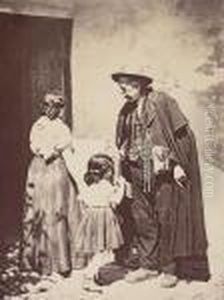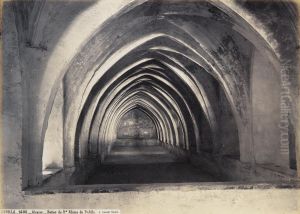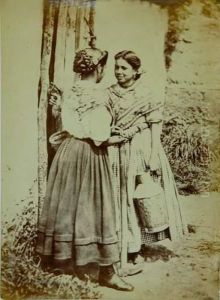Juan Laurent Paintings
Juan Laurent Minier, often known simply as Juan Laurent, was a significant figure in the history of photography in Spain. Born on July 23, 1816, in Garchizy, France, Laurent moved to Spain in the 1840s. Initially, he worked in various occupations, including bookbinding, but he is best remembered for his pioneering work in photography, which he began around 1856.
Laurent's contributions to photography were diverse and impactful. He was one of the first to introduce the albumen print—a photographic printing process that uses egg whites to bind the photographic chemicals to the paper—to Spain. He established a studio in Madrid, which became a center for photographic innovation and production. Laurent is known for his portraits, landscapes, and documentation of artworks and historical sites. His work as a photographer of art was particularly influential; he captured images of paintings, sculptures, and architectural works, many of which were used for educational purposes and to promote Spanish cultural heritage.
Throughout his career, Laurent remained at the forefront of technological advancements in photography. He embraced new techniques and processes, including the daguerreotype, collodion wet plates, and eventually the gelatin silver process, which became the standard for photographic prints in the 20th century.
Laurent's work extended beyond his studio. He was a supplier of photographic materials and equipment, and he published a catalog that became a reference for photographers in Spain and abroad. His photographs were widely distributed, and he participated in international exhibitions, gaining recognition for his skill and artistry.
Juan Laurent's legacy is preserved in the rich collection of photographs he left behind, which provide a valuable visual record of 19th-century Spain. His documentation of Spanish cultural assets has been particularly praised for its historical significance. Laurent died on November 24, 1886, in Madrid, but his work continues to be studied and appreciated for its quality and for the light it sheds on the period in which he lived.


